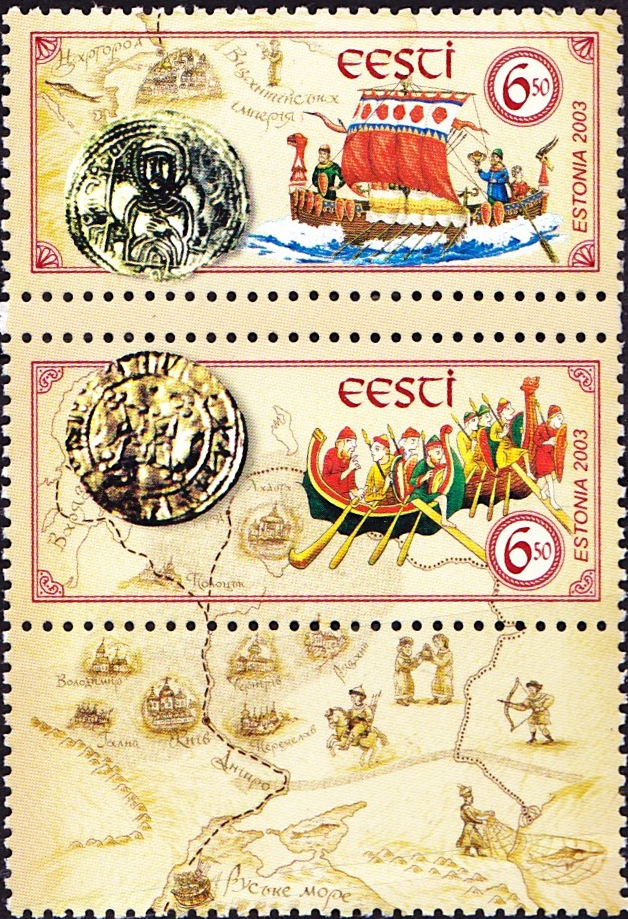| North of Europe, the regions of origin of the Vikings
recover the current territory of the kingdoms of Denmark, Norway and Sweden.
Around year 800, the Scandinavians arrive to Europe: fleets of war arrive on
the coasts of England, France and Spain. In the East of Europe, the
Scandinavian warriors and merchants sail dowstream the Russian rivers
towards the Caspian Sea and the Black Sea.
|
 |
| Around 650, Scandinavians are installed
on the archipelago of Faroe and, according to the saga of Faroese, the first
man to go ashore fled the tyranny of king de Norvège Harald Irst. |

Greenland is colonized by Eric the Red in 984 or 985. |
| Iceland is discovered by the
Scandinavians in years 860; an exploring Swedish Viking, would have been the
first to make the turn of Iceland and to establish that this one was an
island. Ingólfr Arnarson expelled of Norway arrives in 874 and built its
farm on the site which will become Reykjavik. |
 |
| Expeditions towards Vinnland, Markland
and Helluland are then organized: vestiges were found at the northern tip of
Newfoundland. |
 |
 |
| Estonia is on the way of the Viking big
business bound for Russia and of Byzance. From 800, the Scandinavians,
primarily Swedish, called in Eastern Europe Varangians or Rus, will
establish trade route towards Russia and Byzance. |
 |
| Between 850 and 990, the Vikings are
established on the Isle of Man. Other Scandinavians make incursions on the
English coasts where the first attack takes place in 793. |
 |
 |
| In Western Gaul, the first Vikings to
sail upstram come around 840: they sail up the Seine river until besieging
Paris in 845 and they return by three times in 856, 861 and 885. They
implant at the mouth of the Seine in 911. |
 |
| In 1066, Guillaume, duke of Normandy
and descendant of Viking chief Rollon seized the crown of England after his
victory at the battle of Hastings |
 |
 |
| The Viking boat, with sails and oars is
able to carry out long crossings in open sea and to beach thanks to its
shallow draft: long and low for the oars but broad enough for the sail. |
 |
 |
| . Four watercrafts of the 11th
century were discovered in Skuldelev, Denmark: two cargo vessel and two
warships. |
 |
| The prow and the poop are raised; the
hull is clinker built. Propelled by the wind thanks to a rectangular wool
sail, these ships are able to sail up wind very well. But the ships are also
equipped with oars. |
 |
| The Viking ship is also almost
symmetrical between prow and poop, which enables her to move indifferently
ahead and behind the same manner (double ended) |
 |
 |
ODIN'S RAVEN est une réplique au 2/3 du
navire exposé au musée d'Oslo, lancée le 28 avril 1979, en utilisant la
technique de construction des vikings. Parti de Trondheim le 27 mai 1979 et
atteint la plage de Peel, ile de Man, le 5 juillet 1979.
ODIN' S
RAVEN is a two-thirds replica of the Gokstadt ship in the Oslo
Museum, launched on 28 April 1979, by using the building technique of the
Vikings. Leaving Trondheim on 27 May 1979, she reached the beach of Peel,
Isle of Man, on 5 July 1979. |

